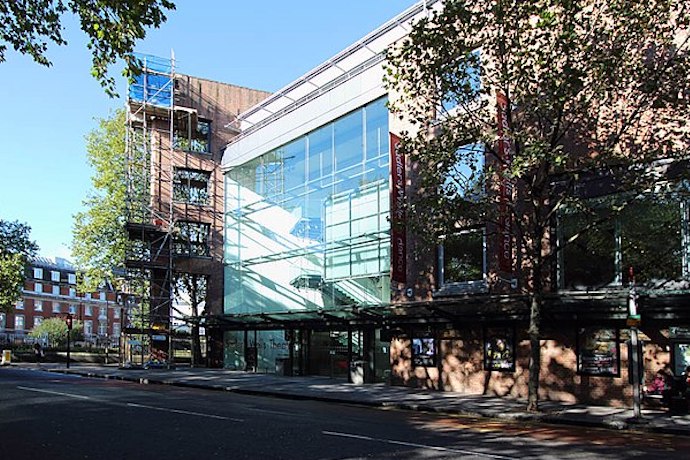
Sadlers Wells Theatre, London
By Will Snell
Seeta Patel, award-winning dancer and choreographer, had a clear vision: to reimagine one of Western ballet’s most renowned and formidable works, Stravinsky’s Rite of Spring, in a Bharatanatyam form, a distinctive school of dance originating from southern India that incorporates the entire body, often in sharp, geometric movements. It’s a simple, clean fusion and, through Patel’s mastery, it works beautifully.
A dozen carefully selected dancers populated the stage to enact the tale of sacrifice and torment, the entirely simple staging proving effective. The group itself was able seamlessly to embody any collective noun the story called for: seething mass, baying mob, fraught accusers, deranged cult – the stuff of nightmares, on the whole. The shapes the cast was able to create, individually and en masse, were various and in many cases extraordinary, though this did become increasingly muted as the necessity for conveying narrative became paramount in the work’s second half. They performed to accompaniment from the Bournemouth Symphony Orchestra, under the baton of Kirill Karabits, whose rendition of the highly demanding score had aplomb and bite, but, as is often the case in ballet, their tempi felt restrained, rendering them unable to thoroughly unleash the true fiery boisterousness they sought to convey.
A key element of Patel’s vision was recasting the sacrificed individual as a male rather than a young female virgin. The character also achieves something of a god-like ascension and, when challenged about this coinciding with the switch to a male casting, Patel explains that gender does not bear the same significance in the Bharatanatyam form as in Western Latin and ballroom schools of dancing, for example.
Rite of Spring was preceded by a solo work performed by Patel herself entitled Shree. It combined masterfully with the Stravinsky interpretation, not only as an ice breaker for those in the audience less familiar with the Bharatanatyan dance style, but also as an enticing piece of art in its own right. Patel moved with exemplary precision and beauty, accompanied by three musicians – a vocalist, a flautist and a thomann player. Every element of the work was curated and sharp: the lighting, sound and musicians, as well as Patel herself.
Seeta Patel’s Rite of Spring was a showcase of how the fusion of differing world styles can be achieved with excellence. It’s little wonder it drew a full house to the Sadlers Wells Theatre for its premiere. ![]()